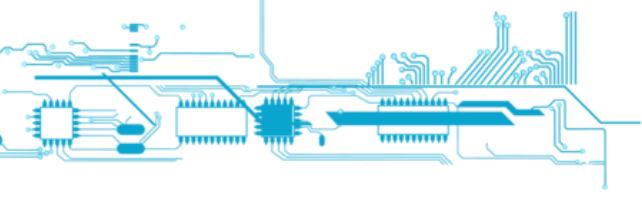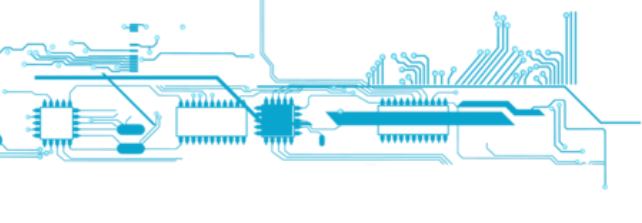
1. Thermogravimetry (TGA)
Thermogravimetry (TGA) measures the mass changes of substances due to temperature changes, and can be used for effective quantitative analysis of mass changes. In this experiment, thermogravimetric analysis is a simulation method for lead-free reflux under nitrogen protection. It is used to analyze the volatilization of small molecules and the degradation of polymers in OSP membrane during lead-free reflux under nitrogen protection.
The results of TGA showed that the degradation temperature of OSP membrane was 259℃, while that of HTOSP membrane was 290℃. Although the degradation temperature of poly (benzimidazole-zinc) was as high as 400℃, the actual degradation temperature of HTOSP film could not reach 400℃ due to the presence of poly (benzimidazole-copper) in the film. Because the chemical composition of the industrial standard OSP film is poly (benzimidazole-copper), its film degradation temperature is low, only 259℃. Interestingly, the other HTOSP membrane has two degradation temperatures, 256℃ and 356℃, respectively. The reason is that this OSP film may contain iron [6] or due to the progressive decomposition of poly (phenylimidazole-iron). The TGA results obtained by F. ian and his colleagues showed that poly (imidazole-iron) also has two degradation temperatures, 216℃and378℃ respectively [7].

3. Photoelectron spectroscopy
Photoelectron spectroscopy is used to study the composition and electron state of the surface of a sample by means of the analysis methods of photoionization and emission photoelectron energy dispersion. The highest binding energies of oxygen (1s), copper (2p) and zinc (2p) are 532-534eV, 932-934eV and 1022eV, respectively, in the XPS spectrum. This technique can be used for quantitative analysis of the surface composition of the outermost layer of the sample at 10nm. By analysis, HT0SP film contains 5.02% oxygen and 0.24% zinc before lead-free reflux treatment. After 5 lead-free refluxes, the content of oxygen and zinc in HT0SP film was 6.2% and 0.22%, respectively. After five lead-free reflux, the copper content increased from 0.60% to 1.73%. The increase in copper ions may be caused by the migration of lower copper ions to the surface during the reflux process.
E.k. hangetc[8] also carried out surface analysis of industry-standard 0SP membranes by using photoelectron spectroscopy. The oxygen content was 5.0% before any reflux treatment, and then increased to 9.1% and 11.0% after one and three conventional SnPb reflux in the air, respectively. It was also reported that after a single SnPb reflux, the oxygen content was increased to 6.5%. In this experiment, photoelectron spectroscopy showed that the oxygen content of industry-standard 0SP membrane increased to 12.5% after 5 lead-free reflow. Therefore, before and after 5 lead-free reflow cycles, the oxygen content increased by 7.5%, which is greater than the 1.2% oxygen content appreciation of HT0SP membrane.
The welding performance of copper depends largely on the oxidation degree of copper and the strength of flux used. Therefore, the oxygen content measured by XPS is a good indicator of the heat resistance of 0SP film. Compared with the industry standard 0SP film, HT0SP has better heat resistance.
After 5 lead-free reflow, the discoloration test showed that the HT0SP film was basically discoloration free, while the industry-standard 0SP film was significantly discoloration free. The results of discoloration test are consistent with those of XPS analysis.
The tin-dip balance test shows that the through-hole weldability of HT0SP film is higher than that of the current industry standard 0SP film after several lead-free reflux. This is consistent with the heat resistance of HTOSP film. With the increase of lead-free reflux times, T.(timetozero) will gradually increase, but the maximum tin-sticking force will slowly decrease. However, the excellent weldability of HT0SP membrane was maintained after 7 lead-free reflow cycles. The shear test showed that the shear force gradually increased and reached the highest point of 25N. Because the shear force depends on the cross section of the shear, the results vary depending on the shape of the ball and the gap between the shear and the pad. The authors believe that the shear force is not limited to the thickness of the OSP film as long as the copper surface is adequately protected against copper oxidation.
conclusion
1. Alkyl benzimidazol-HT used for HT0SP membranes has the lowest volatility compared to other 0SP membranes tested.
2. HT0SP film has the highest degradation temperature compared with other 0SP films tested.
3. After five lead-free reflow cycles, the oxygen content of HT0SP membranes increased by only 1%, compared to 7.5% for industry-standard 0SP membranes. At the same time, the HT0SP film basically does not change color.
4. Due to its excellent heat resistance, HT0SP film still provides excellent weldability in through hole test and tin balance test after more than 3 lead-free reflow.
5.HTOSP film provides high reliability welding points, which can be proved by shear testing.









